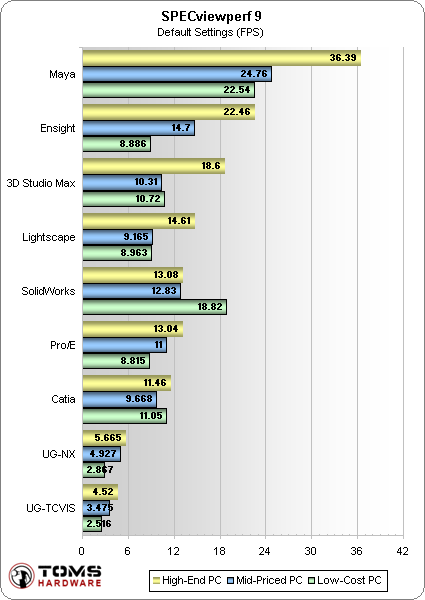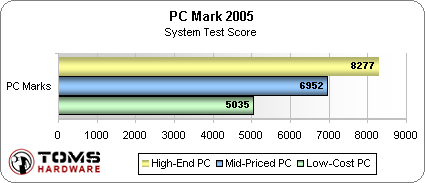System Builder Marathon: Day 4
Applications
Rendering is done completely independent of the video card driver in this test, which utilizes the CPU and memory to render the frame.
The budget system fairs pretty well in 3D Studio max while rendering our Dragon character image at a moderate 1280x720 pixels, but the mid-priced and high-end systems increase their lead as resolution is increased. Remember also that the low-end system is running with only 1 GB of RAM, which might also have an impact if there is a lot of texture memory being used.
Synthetics
Specviewperf 9, which focuses on workstation-based computer aided design, offered the most puzzling results of any of our tests. On the whole, the Athlon 64 3800+/7600 GT combo performed quite well compared to the Core2 Duo e6600/8800 GTS combo in many benchmarks, achieving parity on the whole and even beating it in tests. This is certainly the opposite of what we were expecting.
SolidWorks and Catia surprisingly prefer the low-cost system in the professional modeling benchmark set.
Could this benchmark throw a monkey wrench in the final analysis? Is the 8800 driver not yet mature enough for CAD use? We did experience some difficulties when using the Specviewperf benchmark, and there are a host of questions here that we'd like answered, but it will certainly take some more investigation to find out. We don't have the time to investigate for this article, so for now, the Specviewperf results should probably be taken with a grain of salt.
This is a fitting benchmark to check out first. Even though it's synthetic, PC Mark is showing us a near-perfect spread between the low-cost, midrange, and high-end PCs.
Get Tom's Hardware's best news and in-depth reviews, straight to your inbox.
Don Woligroski was a former senior hardware editor for Tom's Hardware. He has covered a wide range of PC hardware topics, including CPUs, GPUs, system building, and emerging technologies.


